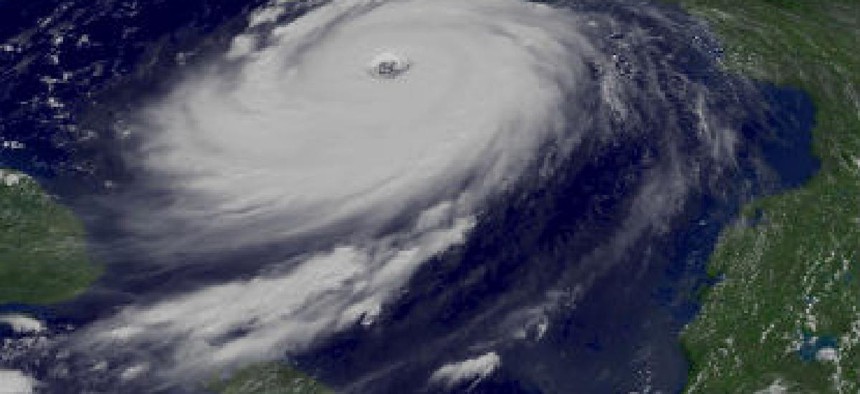NOAA retires long-serving weather satellite

GOES-12 more than doubled its initial life expectancy.
The National Oceanic and Atmospheric Administration retired one of its oldest and most reliable weather satellites this week.
During more than a decade of service, Geostationary Operational Environmental Satellite -12 tracked some of the most famous weather events in history, keeping its watchful eye in the sky on Hurricane Katrina in 2005 and monitoring the Christmas blizzard of 2009 that paralyzed the Midwest.
Launched in 2001, GOES-12 is old by satellite standards -- its original life expectancy was five years -- making it a success by any measure devised by NOAA or NASA, which put the satellite into orbit.
Designed by Space Systems/Loral, GOES-12 became operational in 2003 as the GOES-East satellite, monitoring weather along the East Coast and over the Atlantic Ocean. Geostationary satellites like GOES-12 provide imaging vital to short-term weather forecasts from their vantage point 22,000 miles above the Earth's equator. The satellite images people see during weather forecasts usually come from such satellites.
In 2010, GOES-12 -- its capabilities slightly diminished -- was shifted to monitor volcanic ash clouds, wildfires and droughts over South America, with its coverage of East Coast weather taken over by its younger GOES sibling satellites.
"GOES-12 gave the Western Hemisphere many years of reliable data as the operational eastern GOES for accurate forecasts, from small storms to those of historic proportions," said Mary Kicza, assistant administrator for NOAA's Satellite and Information Service.
GOES-12 will now be put out to pasture, and sent into a much higher orbit around the Earth.
Anytime NOAA decommissions a geostationary satellite, the satellite's battery is disabled, its transmitters are turned off and its remaining fuel burned off in one last boost to push it past the paths of operational spacecraft and satellites. The decommissioning process lowers the risk of orbital debris and eliminates any risk of the satellite producing signals that interfere with other spacecraft.
The current crop of geostationary satellites will be followed by the GOES-R satellite series, a joint NOAA-NASA partnership. The $10.9 billion GOES-R program has come under criticism by the Government Accountability Office and NOAA's Inspector General, which released audits that suggest the potential for launch delays and cost overruns. The first of four new geostationary satellites developed through GOES-R is scheduled to launch in October 2015.
When operational, the GOES-R satellites are expected to "more than double" the clarity of imaging produced by today's satellites, according to a statement from NOAA. GOES-R satellites will also contain a slew of new instruments, the development of which thus far is ahead of schedule.






